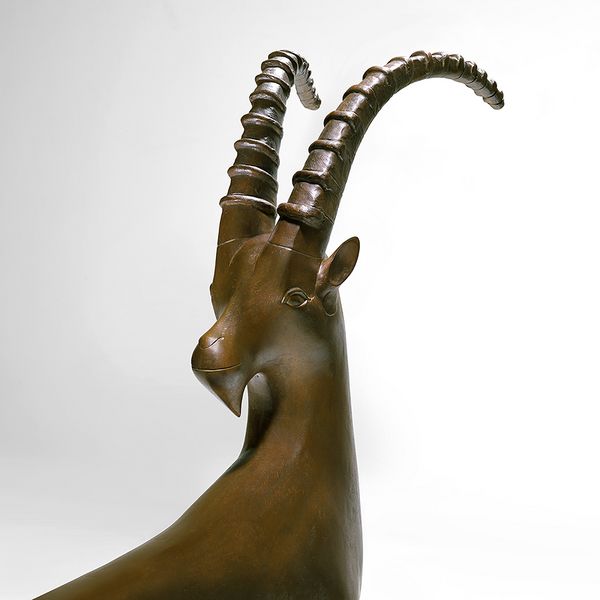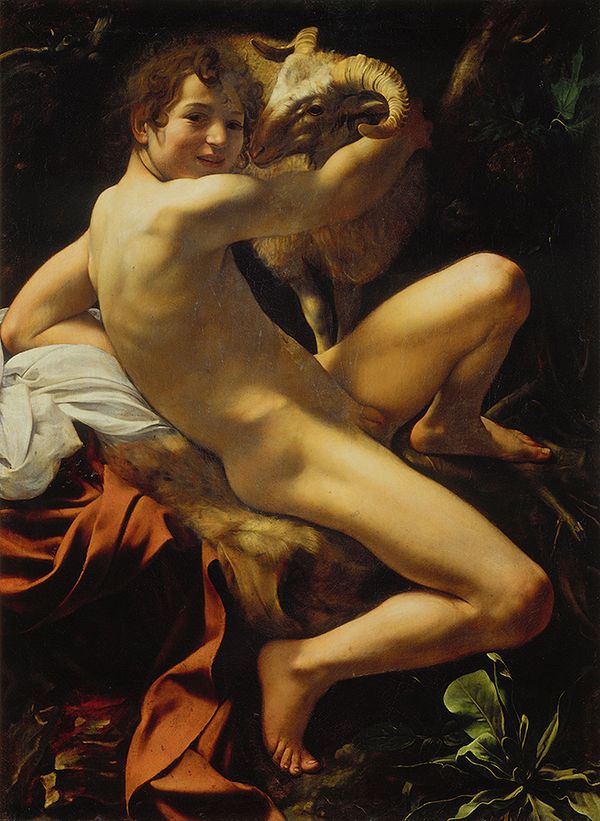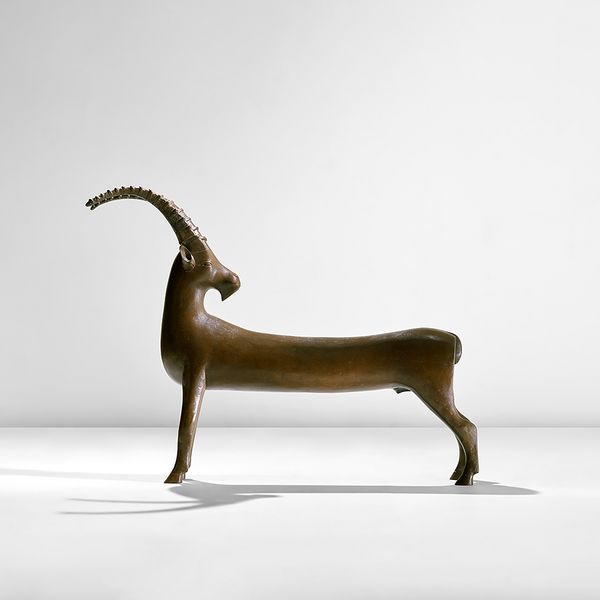François-Xavier Lalanne, ‘Grand Bouquetin,’ 1999. Design London.
—Written by Guy Boyer
The Grand Bouquetin is an important and integral part of François-Xavier Lalanne’s fantastical bestiary, which was conceived in the 1960s. The ensuing life-long oeuvre now places François-Xavier Lalanne among the most important animaliers in the Western World since the Middle Ages, following in the steps of the great masters, who over the years have used the imagery of animals to convey subliminal messages in their work to the viewer.

François-Xavier Lalanne, ‘Grand Bouquetin’ (detail), 1999. Design London.
The Genesis: Le Mouton du Petit Prince?
In 1966, when François-Xavier Lalanne designed his first sheep, could the sentence written by Saint-Exupéry some twenty-two years earlier, “S’il te plait, dessine-moi un mouton,” expressed by the “extraordinary little fellow” that was the Little Prince, have been on his mind? The narrator of that tale, who only knows how to draw snakes, sketches a sheep but outlines it badly. He then redraws it with ram horns but ultimately designs a crate containing a tiny sheep. This last drawing fully satisfies the Little Prince, who imagines the box to contain the animal of his dreams. This classic story of a sheep that removes baobab tree shoots invading the planet can be seen to fittingly characterize François-Xavier Lalanne’s surrealist spirit. The artist was close to the animal sculptor François Pompon and an admirer of Constantin Brâncuși. In his own oeuvre, Lalanne emulated the simplified lines and polished surfaces of the former, along with the tension of forms and the link between object and space of the latter.
In the mid-1960s, François-Xavier Lalanne imagined a herd of twenty-four sheep which function as stools when apart and form a long bench when united. These hieratic animals covered in dense wool oscillate between their status as utilitarian objects and sculpture. As art critic Daniel Abadie aptly explains in his book Lalanne(s), “François-Xavier Lalanne’s proposed title — Pour Polyphème — clearly underlined that the artist’s intention for these works was, under the guise of sheep, to smuggle a wolf into the sheepfold of the self-righteous political painting themes that pervaded the Salon de la Jeune Peinture at that time.” Indeed, this sheep-bench conceals the ewes, which allowed Odysseus and his companions to flee from the blind cyclops’ cave. They symbolized the return of figurative art, which challenged contemporary advocates of abstraction and invaded the interiors and gardens of collectors. They can also be found in the Lycée d’enseignement professionnel at Agen-Foulayronnes, in the ethnography room of the Musée de la Vallée in Barcelonnette, at the Château de Chenonceau, in the park of Trianon and the Folie de Bagatelle.

François-Xavier Lalanne, ‘Grand Bouquetin,’ 1999. Design London.
The Grand Bouquetin: A Mythical Animal Joins Lalanne’s Ark
Over time, François-Xavier Lalanne continued to bring an entire family of animals to life. The epoxy stone Mouton de Pierre emerged in 1979 and the Mouton Transhumant in 1988. These sheep later morphed into an alpine ibex with ringed horns. Developing this theme further, he also imagined a great alpine ibex, the Grand Bouquetin of 1999, in patinated or gilded bronze. The body of this extraordinary example is gracefully elongated. In another elegant iteration, its head is mirrored on the opposite side of its body to support the glass top of a console table. The present Grand Bouquetin stands out for its dynamic silhouette with an impressive head turned backward and curved horns extending forward. Its pricked ears and finely outlined almond-shaped eyes are reminiscent of Egyptian profiles. The nostrils are subtly delineated, its mouth is represented by a simple horizontal line, and its profile ends in an amusing goatee — jutting out like a comma. The rest of the body is defined and rounded like a pommel horse, ending with a small tail atop the hind legs. The nimble legs recall the animal's ability to leap in the mountains, leaning his hooves on the slightest protrusion. This agile ibex recalls the German Steinbock, the Occitan boc, and the steady-footed mountain goat.

Caravaggio, St John the Baptist (Youth with Ram), 1602, The Capitoline Museums, Rome. Image: © Scala, Florence
Contemporary, Yet Anchored in Tradition
Lalanne’s representation, however, is far from naturalistic. The artist chooses not to show the horn’s growth lines, which typically reveal the age of an adult male. He concentrates instead on their nodules, which punctuate the two formidable scimitars. While a lightly hatched surface suggests the texture of the ibex’s fur, here Lalanne refrains from referencing the coat’s colors, unlike in the representation of his dark-spotted leopard. Reminiscent of his master, the sculptor Pompon, he conveys the Grand Bouquetin’s character thanks to striking details that place it definitively in the long litany of creatures that punctuate the history of art and are as much a symbol of sacrifice as they are reassuring and playful images: the Lamb of God enthroned at the center of the polyptych by the Van Eyck brothers (1432), Youth with a Ram by Caravaggio (1602), the sacrificed lamb of Zurbaran’s Agnus Dei (1635-1640), followed by the more true-to-life sheep of Jean-François Millet's Shepherdess (1863) and those of The Pyrenees by Rosa Bonheur (1864), ending with the allegories of war with Picasso's Goat's skull on the Table (1945) and the poignant sheep in formaldehyde by Damien Hirst (1995). Throughout his career, François-Xavier Lalanne, independently or together with his wife Claude, created a true menagerie which includes fish and birds as well as mammals of all kinds — a rabbit with a fish tail, a minotaur, a gorilla, a boar-topiary, a formidable cow. This collective bestiary features characters fit for a fantastical tale. The Grand Bouquetin, who briskly turns his head as if surprised by an unexpected sound, can thus stand on par with the March Hare and the Cheshire Cat from Alice in Wonderland.
About the Writer:
Guy Boyer is an art historian and journalist, as well as the editorial director of Connaissance-des Arts, a monthly French art magazine. He was previously editor-in-chief at Beaux-Arts Magazine and editorial director of L’Œil. In addition to writing, he hosts a semi-weekly show on Radio Classique.
Discover More from Design London >
Recommended Reading
